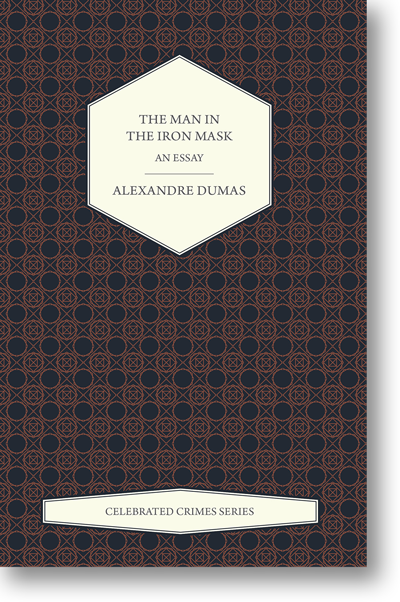The Man in the Iron Mask – An Essay by Alexandre Dumas
This book contains a fascinating reflective essay on the themes, facts, and fiction, in Alexandre Dumas’s historical novel “The Man in the Iron Mask”.
An interesting and accessible exploration of the famous story, this essay is highly recommended for those who have read and enjoyed the final episode in the d’Artagnan Romances and will be of special utility to students. ‘The Man in the Iron Mask’ was a name given to a prisoner arrested as Eustache Dauger in 1669 or 1670, and held in a number of jails, including the Bastille and the Fortress of Pignerol. In the late 1840s, Dumas elaborated on the theme in the final instalment of his “Three Musketeers” Saga: where the prisoner is forced to wear an iron mask and is Louis XIV’s identical twin.
Alexandre Dumas (1802–1870) was a famous French writer. He is best remembered for his exciting romantic sagas, including “The Three Musketeers” and “The Count of Monte Cristo”. Despite making a great deal of money from his writing, Dumas was almost perpetually penniless thanks to his extravagant lifestyle. The works of Alexandre Dumas have since been translated into nearly a hundred different languages, and have inspired over two hundred motion pictures.
Many vintage texts such as “The Man in the Iron Mask” are becoming increasingly rare and expensive, and it is with this in mind that we are republishing this volume now, in an affordable, modern, high-quality edition. It comes complete with a specially commissioned new biography of the author.
***
Here, at Alexandre Dumas Works, you can find the best of this of this scintillating author’s historical novels, essays, plays, and travel books.
We also have a biography of Alexandre Dumas, recounting a personal life almost as tumultuous as the fiction he penned, as well as a constantly updated selection of his quotes, anecdotes, and wisdom.
Through republishing works such as ‘The Man in the Iron Mask’, it is hoped that the writing of this most widely read of French authors, can continue to delight – almost two centuries after its initial publication.
